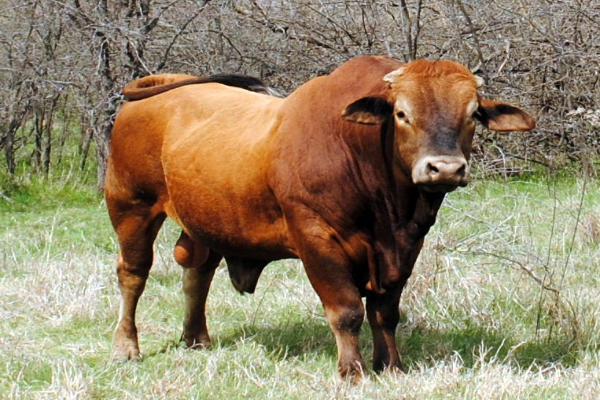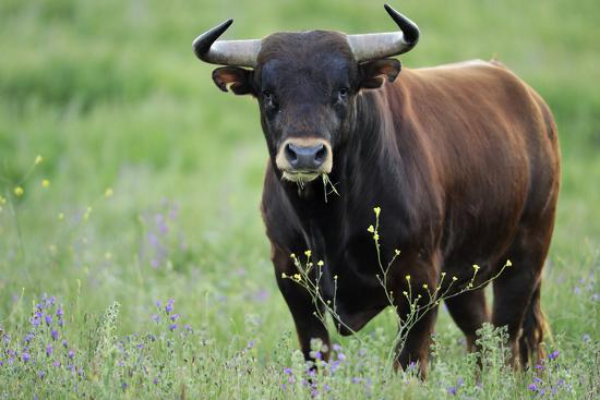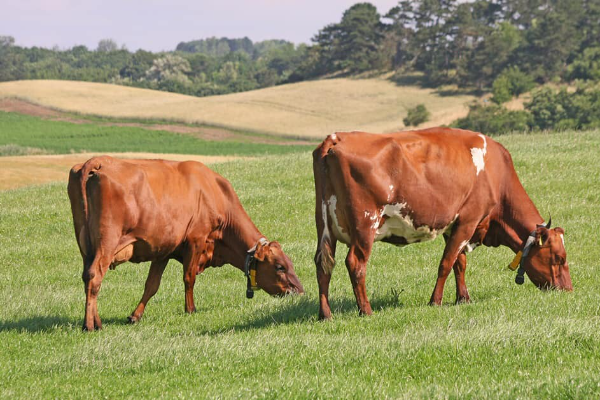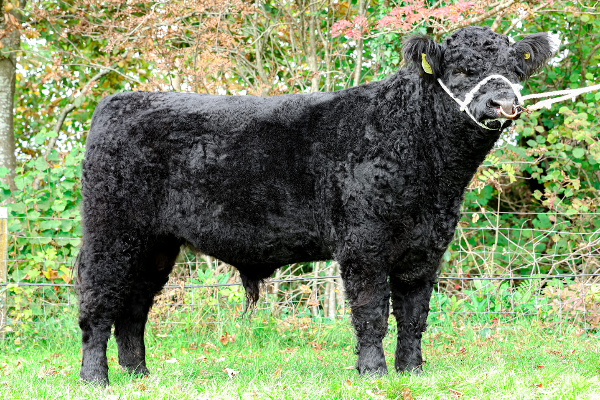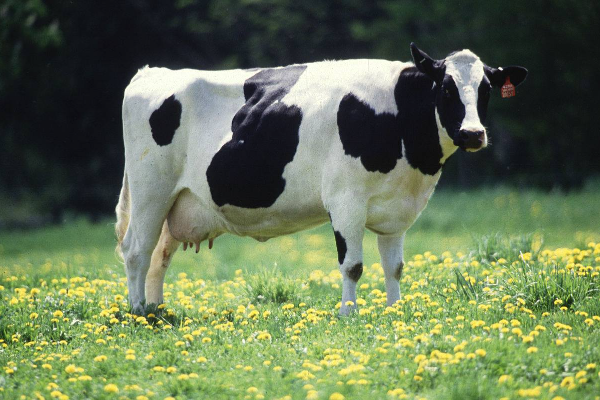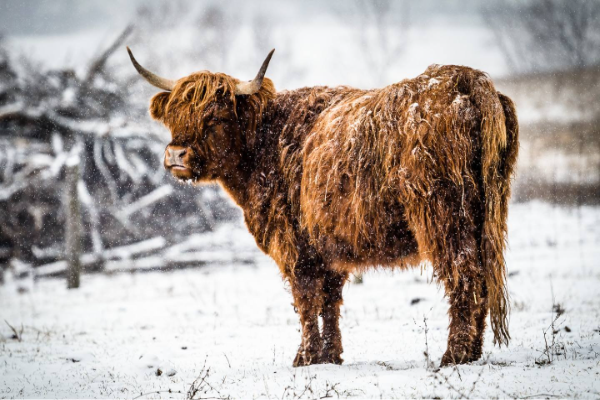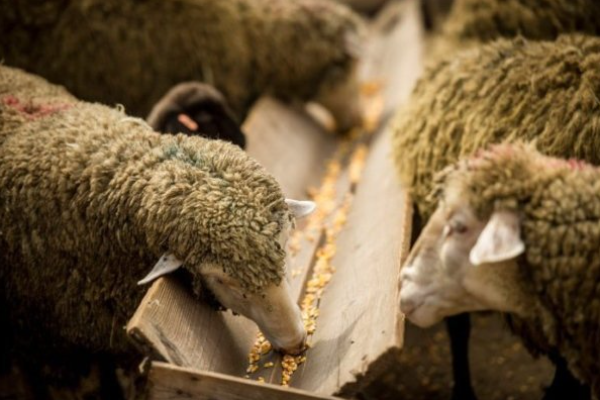Canchim Cattle

What Is the History of Canchim Cattle?
Canchim cattle were originally bred to improve Brazilian beef cattle breeding. Initially, Zebu cattle (an Indu-Brazilian cattle breed) were introduced to Brazil to improve the beef and were crossbred with native cattle. However, such cattle were inferior to European breeds for growth rate and meat yield. Charolais cattle, from Europe, were then brought in and crossbred with Zebu cattle to form Canchim cattle as they were high yielding and showed signs of being able to adapt to the unique location that is central Brazil.
From 1922-1936, the Ministry of Agriculture brought in Charolais cattle to Goias, before being transferred to Sao Carlos in the state of Sao Paulo, now the Canchim Farm of the Government Research Station, Embrapa. A program of crossbreeding has occurred from this herd.
The Indobrazel, a type of Zebu, was the main one to contribute to the formation of the Canchim cattle as was cheapest and easiest for obtaining large herds. The Guzera and Nelore were also Zebu breeds that contributed to the Canchim cattle, however, were used less due to more expensive herds.
In 1940 a study of crossbreeding conducted by Dr. Antonio Teixeira Vianna found that a ⅝ Charolais and ⅜ Zebu crossbreed was prime for heat and parasite resistance and coat uniformity. Following this, in 1953, the first of this cross of cattle were bred in Central Brazil and were named Canchim.
More recently, the Nelore is the most popular of the Zebu breeds in for the formation of new Canchim cattle.
What Are the Characteristics of Canchim Cattle?
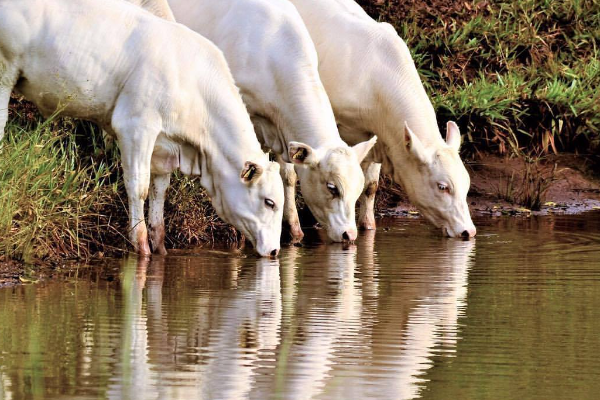
Medium in size, Canchim cattle often have a smooth, short coat that is white to light beige in color. Similarly to the Charolais cattle, the Canchim cattle are muscular in stature whereas the small hump on their backs was obtained from their Nelore/Zebu roots.
As aforementioned, the Canchim cattle are known for their hardiness, tolerance of hot climates, parasite and disease resistance, and beefing qualities. Canchim cattle are also known for their high libido, meaning a high production yield and fertility as well as fast-growing calves. When compared to Zebu bulls, Canchim bulls produce the same number of calves, just far weightier and superior in quality. Whereas, compared to European cattle, Canchim bulls produce more calves of similar weight.
Due to their fast-growing nature, Canchim bulls are slaughtered at 18 months from feedlots after weening, 24 months from feedlots after grazing, and 30 months from grazing on the range,
Characteristics such as the above make the Canchim cattle meet the demands of both the consumer and market.
How Much Do Canchim Cattle Weigh?
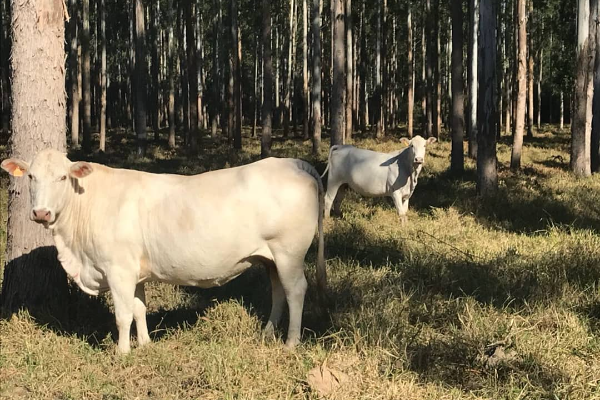
Canchim cattle are most commonly terminated at around 530kg at 25/26 months old. Those that are aged to 21 months can weigh up to 600kg.

Written by
Zoe BASSETT
Farmow English WriterBreedsMore
IllnessesMore
Forage cropsMore
![]() Патологическая физиология голодания Arina TARAN
Патологическая физиология голодания Arina TARAN![]() Дефицит фосфора (гипофосфатемия) Hipofosfatemi Arina TARAN
Дефицит фосфора (гипофосфатемия) Hipofosfatemi Arina TARAN![]() Какие бывают кормораздатчики для ферм КРС? Irina Makarova
Какие бывают кормораздатчики для ферм КРС? Irina Makarova![]() Кормушки для овец Diana Myakisheva
Кормушки для овец Diana Myakisheva![]() Питание домашних коз: что едят, виды корма и правила кормления Alina Arslantürk
Питание домашних коз: что едят, виды корма и правила кормления Alina Arslantürk![]() Важность минералов питании сельскохозяйственных животных Irina Makarova
Важность минералов питании сельскохозяйственных животных Irina Makarova

